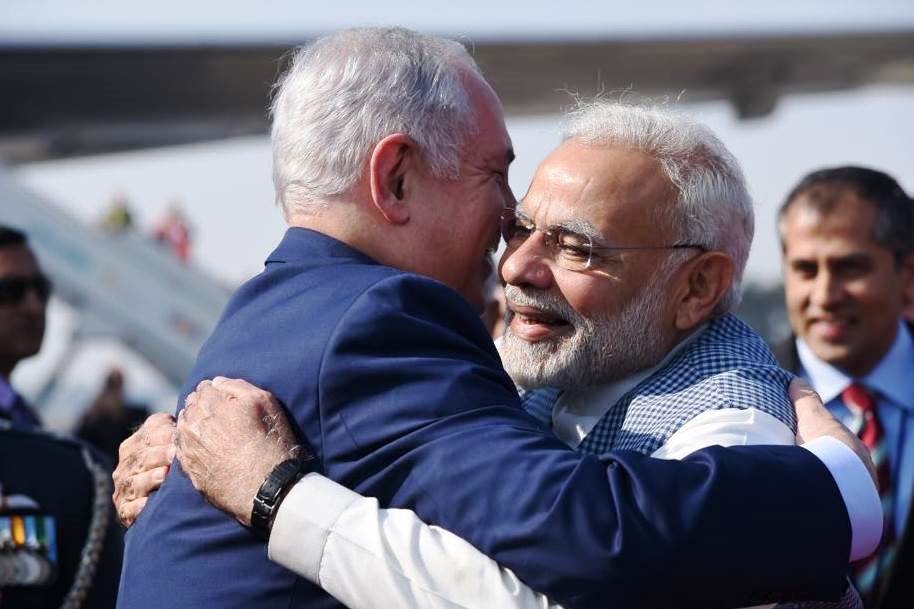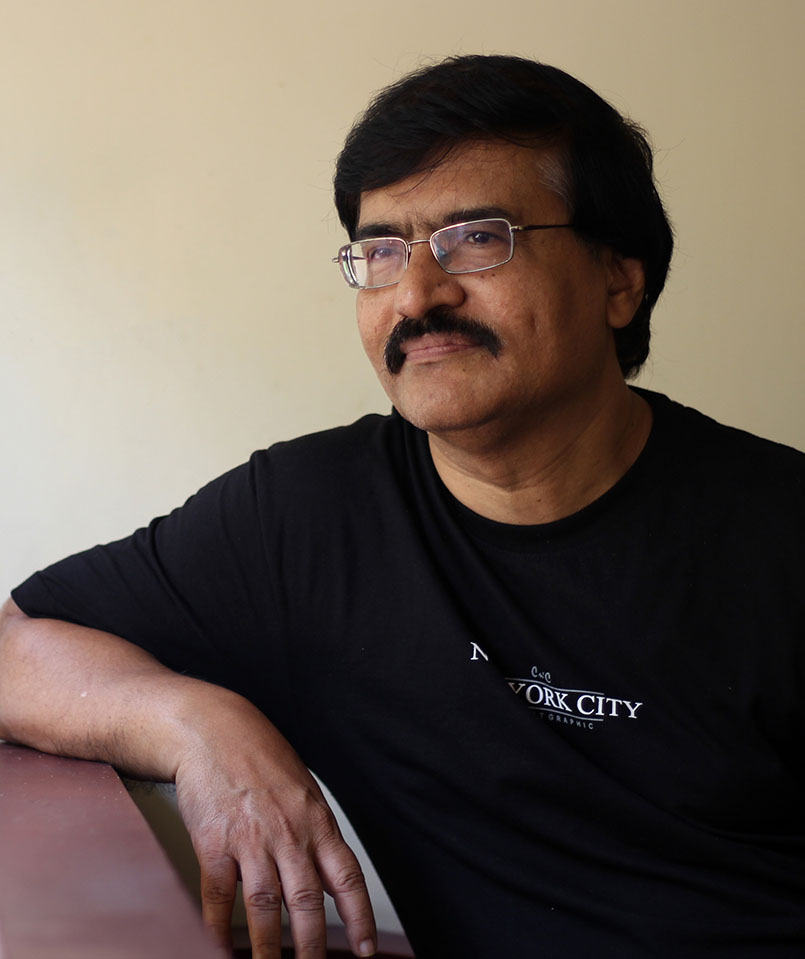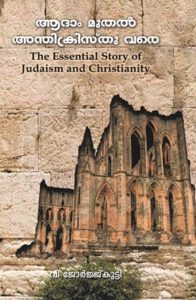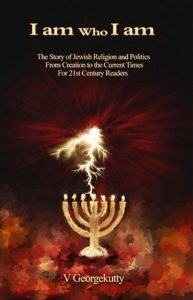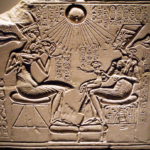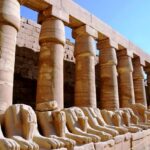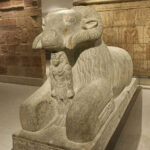“I have spread my dreams under your feet;
Tread softly because you tread on my dreams”
– W B Yeats
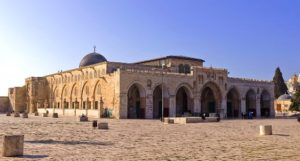
In a short speech delivered at the White House on December 6, 2017, President Donald Trump announced the US decision to recognize Jerusalem as the capital of Israel. He directed the state department to take necessary steps to move the US embassy from Tel Aviv to Jerusalem. As expected, Israeli Prime Minister Benjamin Netanyahu welcomed the announcement. But, Palestinian President Mahmoud Abbas declared that the US can no longer act as a mediator between Israel and the Palestinians. And Abu Atya, one of the young Palestinian men in a Jerusalem refugee camp watching the US President’s speech translated into Arabic shouted, “This is shit!”
The announcement made by Trump seems to have outraged nations across the world, or at least most nations acted so. On December 21, 2017, UN General Assembly adopted a resolution criticizing the US decision by a recorded vote of 128 in favour to nine against with 35 abstentions. India voted in favour of the resolution in spite of the newfound bonhomie between Israel and India. PM Modi visited Israel in July 2017 – the first ever visit by an Indian PM after India established diplomatic relations with Israel 25 year ago, in January 1992. Israeli PM Benjamin Netanyahu is currently on a visit to India. He says that India’s UN vote does not affect Indo-Israel relations.
The state of Israel came into existence in May 1948. Why does the recognition of Jerusalem as the capital of Israel seventy years later disturb the rest of the world? The answer lies in the chequered history of the Jewish people and the belief of Judaism, Christianity and Islam, that Jerusalem is the holy land of their faith.
According to the Tanakh, the Jewish Holy Book (Old Testament Bible), the history of Jews start in Adam, the first human being God had created. But for the purpose of this post, let us jump to Abraham, the Jewish Patriarch who is considered the father of monotheism, and to whom all three Semitic religions viz. Judaism, Christianity and Islam, trace their roots.
Abraham was born in the city of Ur in ancient Mesopotamia (present day Iraq). God promised Abraham that He would give the land of Canaan (Palestine) to him and his descendants as their inheritance. Thus, Palestine became the ‘Promised Land’ of Abraham and his descendants. It was a dangerous promise that for the first time mixed faith with politics. Abraham and his family moved into Canaan.
Abraham had two sons – Ismail born to his concubine Hagar and Isaac to whom his wife Sarah gave birth. Sarah forced Abraham to send away Ismail and his mother into the desert. It is believed that Islam originated in Ismail. God commanded Abraham to sacrifice his son Isaac on Mount Moriah. Abraham proceeded to obey. But God saved Isaac at the last moment. Mount Moriah eventually became the ‘Temple Mount’. Isaac had a son named Jacob, whose name God changed to Israel. Israel had twelve sons. From those twelve sons of Israel, the twelve tribes of Israel originated. Their descendants are the children of Israel (Israelites).
Joseph, the eleventh son of Israel, was his father’s pet. That made his elder brothers jealous. To get rid of Joseph, they secretly sold him as a slave to Midianite traders, who took him to Egypt. In Egypt, Joseph rose to become the trusted lieutenant of Pharaoh. But his siblings never knew it. And his father had believed the story told to him that Joseph was killed by an animal.
The patriarchs were pastoral seminomadic people. Famine gripped the lands when rains failed for seven years in a row. Learning that grain was available in Egypt, Jacob sent his sons to Egypt. In Egypt, they came face to face with Joseph, but did not recognize him. But Joseph recognized his brothers. Eventually, Israel and his whole family comprising of seventy members moved into Egypt, lived there long and multiplied.
Israelites lived happily in the beginning since the Pharaoh had great regard for Joseph. However, situation changed as Joseph died and other Pharaohs ascended the Egyptian throne. In course of time, Israelites became slaves of Egyptians. They toiled and suffered under their ruthless masters. Finally, God sent Moses to deliver the Israelites from Egyptian slavery. Moses led the huge population for forty years through the Sinai desert, on their way to their ‘Promised Land’. When they reached Palestine, the local tribes refused to hand over their land to the people who came from Egypt with funny claims of a ‘Promised Land’. Long and bloody battles followed. Eventually, substantial extents of Palestinian territories came under Israeli control.
Israel was not a cohesive nation under a common ruler to start with. Political leadership was mostly vested in the tribal chieftains or religious leaders. Finally, people sought a king for them and in 11th century BCE, Saul became the first king of Israel. It marked the transition of Israelites from a tribal society to statehood. Saul died in the battlefield and David, the greatest hero of Jewish history, became the king.
Jerusalem was not part of Israel even when David became king. In circa 1003 BCE, he conquered Mount Zion, a hill fort in Jerusalem and named it the ‘City of David’. With plans to build a temple for Jehovah, his God, David purchased the hill north of Mount Zion (Mount Moriah) from its Canaanite owner. But God prohibited David from building the Temple since he had shed too much blood on earth. So his son Solomon, who succeeded him, built the most magnificent Jewish Temple on that hill. Mount Moriah became Temple Mount. These hills together with neighbouring territories became the city of Jerusalem. And the whole of Jerusalem became the ‘City of David’.
In 587 BCE, Solomon’s Temple was destroyed by Babylonian King Nebuchadnezzar II. The Jews in Jerusalem were exiled to Babylon. Some 60-70 years later, Persians conquered Babylon. They allowed the Jews to return to Jerusalem and rebuild their Holy Temple. They built the Second Temple on the spot where the first Temple stood. This Temple was later renovated by King Herod. Palestine was then under Roman rule. In the course of the first Jewish Revolt (66-73), in 70 CE, Roman legions under Titus burned down the (Second) Temple and destroyed much of Jerusalem city. A Second Jewish revolt (132 – 135) too was brutally crushed by the Romans. The vengeful Romans enslaved Jews and took them to Rome. Many escaped to other parts of the world. The rest were driven out of Palestine. Jerusalem was renamed as Aelia Capitolina. On the remains of the Jewish Temple, the Romans built a temple of Jupiter. The age of the ‘Wandering Jew’, began. It lasted close to two millennia.
The ‘Wandering Jew’ began to be increasingly hated. “…for the living, the Jew was a dead man; for the natives, an alien and vagrant; for property holders, a beggar; for the poor, an exploiter and a millionaire; for the patriot a man without a country”. By late nineteenth century, Zionism arose as a movement of world Jewry with the aim of creating a Jewish state in their ‘Promised Land’. By 20th century, Jew hatred (Anti-Semitism) turned particularly violent in Europe. It culminated in the Holocaust, the ruthless and systematic racial cleansing operation by German Nazi regime under Adolf Hitler under the cover of the Second World War. Some sixty lakh Jews were massacred. Jews could no more survive without a nation of their own. And Jews from across the world started flowing into Palestine.
Palestine was under temporary British control (Mandate) until 14 May 1948, after the territory was seized from Ottoman Empire in WWI. On 29 November 1947, the UN General Assembly adopted a Resolution proposing to divide Palestine into two states, one Arab, and the other Jewish. Jerusalem, which had a mixed Arab-Jewish population and holy locations, was to be a separate territory to be administered by an international regime (corpus separatum). Jews accepted the UN plan although they rued the loss of Jerusalem. Arabs rejected the UN plan. On May 14, 1948, Jews declared the formation of the state of Israel. The next day, the Arab League forces launched an attack on Israel, starting the First Arab-Israeli War.
As already mentioned, Jerusalem is holy to Judaism, Christianity and Islam. For the Jews, it is the place where the Temple of their God once stood. It was the capital of the united kingdom of ancient Israel and the ‘City of David’. Each time they were exiled from Jerusalem, Jews dreamed of returning one day to their holy city.
Jerusalem is sacred for Christianity. Jesus, their Messiah, remained a Jew all his life and his genealogy is traced back to King David. Jesus was born in Bethlehem, a place close to Jerusalem. He was crucified in Jerusalem. His body was buried in a tomb in Jerusalem. And as Christians believe, Jerusalem was the scene of the resurrection of Jesus.
Islam believes that Prophet Muhammad was taken on a miraculous night journey from Mecca to the “the Farthest Masjid” (Arabic: al-Masjidi ‘l-’Aqṣá) from where he ascended to the heavens, met God and returned to Mecca the same night. The place referred to in the Holy Qur’an as “the Farthest Masjid” has been historically considered as referring to the site of the al-Aqsa Mosque on the Temple Mount. The mosque was actually built after the death of the Prophet. It is believed that the mosque stands on the spot where the Prophet prayed.
Judaism, Christianity and Islam identify at least one spot in the Old City of Jerusalem as the most sacred site of the faith. The Jewish Holy Temple once stood on the Temple Mount, which makes it holy ground for the Jews. For Christians, it is Calvary, where Jesus was crucified, which a majority of Christians believe is situated in what is today the Church of the Holy Sepulchre. And for Muslims, Al-Aqsa Mosque has come to refer to the entire Haram al-Sharif (Temple Mount).
The first Arab-Israeli War of 1948 was the first existential challenge a fledgling Israel faced. The world believed that the Arab Goliath would crush the little David, Israel. But Israel hit back with all its might. When the war finally ended on 24 July 1949, Israel had increased its land area by almost 50%. Also, when the cease-fire lines were drawn, western Jerusalem became Israeli territory. Jordan annexed eastern parts of Jerusalem including the Old City (East Jerusalem), where the Western Wall (The Wailing Wall, a Jewish sacred spot) and the Temple Mount are situated. Jordan also occupied the West Bank (of River Jordan). The Jordanians destroyed much of the Old City’s Jewish Quarter and denied Jews access to the ‘Wailing Wall’.
At the end of the war, the Palestinians (mostly Muslims), who had become refugees in their own land, were left high and dry. Although, the UN (at least officially) stuck with its plan for the internationalization of Jerusalem even after the war, both Israel and Jordan preferred to keep the city of Jerusalem divided. Barriers were erected and restrictions were imposed by each side on the other.
In 1950, Israel declared Jerusalem to be its capital and started locating its primary institutions of national government in the city. It included the Israeli Parliament (the Knesset), the Offices of the President and Prime Minister, other cabinet-level ministry offices, and the Israeli Supreme Court. The lone exception was the Defense Ministry, which was kept in Tel Aviv for security reasons. Jordan, which annexed East Jerusalem, named Jerusalem as its second capital. However, it remained a much-neglected second capital of Jordan.
The question of Jerusalem remained open until 1967. Officially, Jerusalem was not recognized as part of either Israeli or Jordanian territory. While foreign diplomats visited Jerusalem to meet Israeli officials, no country recognized Jerusalem as Israel’s capital or made any moves to set up their embassies there. Everyone hoped of a future political settlement on the Jerusalem question.
Then in 1967, came the Six-Day War. Sensing that the Arabs were planning a massive attack on Israel, Israeli air force launched pre-emptive strikes on the morning of June 5, 1967. It destroyed the entire Egyptian air force. Later the same day, the air forces of Jordan and Syria too suffered the same fate. The War lasted just six days. By the end of the war, Israel had captured the Sinai Peninsula from Egypt, West Bank and East Jerusalem from Jordan and Golan Heights from Syria. Israel removed the fence that split Jerusalem as East and West, and expanded the boundaries of Jerusalem by taking in a number of Arab neighbourhoods that had never been part of metropolitan Jerusalem.
On July 30, 1980, Israeli Parliament (Knesset) passed The Jerusalem Law, which declared, “Jerusalem, complete and united, is the capital of Israel”. Over the years, Israel has moved all of its government offices to Jerusalem. Many of these were established in the eastern section of Jerusalem. Israel has been carrying out extensive constructions there. It has also adopted a number of political policies to ensure that even a future more accommodative Israeli government would not be able to cede any part of Jerusalem to a Palestinian state.
However, the international community declined to recognize Jerusalem as part of Israel. Seventy years after Israel came into existence, countries with diplomatic relations with Israel have continued to maintain their embassies over 40 miles away, in Tel Aviv. President Trump has now disturbed that position.
President Trump’s announcement leaves many questions unanswered. For instance, do the Americans intend to recognize Israeli sovereignty over all of Jerusalem covering both East and West Jerusalem? In 2015, the overall population of Jerusalem was 865,000, of whom 324,000 (some 38 percent) were Arabs, while most of the rest were Jews. What would happen to the Palestinians who reside in Jerusalem?
A very fragile balance prevails in Jerusalem following President Trump’s announcement. There is no reason to believe that the Palestinians will give up control of Haram al-Sharif (Temple Mount). Also, it is quite unlikely that the Arabs would forgo East Jerusalem as the capital of a future Palestinian state for which they have been fighting and dying for the last seventy long years.
President Trump’s announcement is an alarming break from the diplomatic stand of neutrality in the Palestinian problem that the US has been following. However, the fact remains that the rising right-wing evangelical Christian groups joined by a subset of American Jews and others on the political right have been arguing that the United States should give up neutrality and back Israel in the Arab-Israeli conflict. This domestic political reality and the recent discouraging performance of the Republican Party in US elections might have been compelling grounds for the President to make such an announcement. Above all, as the world knows by now, President Trump has an irresistible inclination to shake things up suddenly to shock and awe all.
Nevertheless, it is significant that the President avoided setting a definite date for moving the US embassy to Jerusalem. And in spite of making the declaration, Trump has signed the waiver delaying the move for another six months.
One of the young Palestinian men in Jerusalem who grew agitated as he watched Trump’s speech said, “We are calling for a new intifada”. Incidentally, Intifada is an Arabic word literally meaning “tremor”, “shivering”, or “shuddering”. The young man was calling for a violent upsurge in Jerusalem against the US decision. In fact, Jerusalem has already witnessed two intifadas.
The first intifada was triggered by a road accident on 8 December 1987, in which four Palestinians were killed and seven others were injured. Rumours spread and the large crowd that assembled at the funeral of the accident victims turned violent. One Palestinian girl was killed when Israel forces fired into the crowds. And she became the first martyr of the intifada. Sporadic violence continued for six years, in the course of which Israeli army killed around 1200 Palestinians, which included many children. The first intifada led to Oslo I agreement.
The second intifada erupted on 28 September 2000, when Ariel Sharon, the then opposition leader, walked in to al-Aqsa mosque on the Temple Mount. Arabs went mad with anger. Clashes broke out between the Palestinians and the Israeli security forces who accompanied Sharon. Seven Palestinians were killed. As the rebellion spread, Israel responded with a heavy hand. In the first five days of the rebellion, 50 Palestinians were killed and more than 1000 were wounded. The second intifada culminated in Israeli withdrawal from Gaza.
Let me now conclude. Jerusalem is a powder keg and the smallest wrong move there could set off a bloody religious war. Jerusalem watchers are asking themselves whether there would be a third intifada now. Public blusters notwithstanding, a third intifada is unlikely, at least not anytime soon. Most Arabs know that Israel is too strong an enemy to be brought down or browbeaten through internal violence. Seventy per cent of Israeli males have served in the military for at least three years and are combat trained. Sixty percent of women have served in the military for two years. The Israeli army has a reserve force of 420,000 men and another 80,000 men in its security force. Besides Israel has a strong economy of $300 billion that is no comparison with the poor West Bank economy of less than $7 billion. Above all, Israelis are good in improvising solutions to protect themselves from acts of terrorism.
Intifada or no intifada, there is hardly a chance for peace in Palestine. The prospects of a Palestinian state under the UN two-state plan too are remote. With the steady rise in Israeli settlements in the West Bank and East Jerusalem, a two-state split of the territory has already been rendered infeasible. An Israeli Arab’s identity card is marked with the letter “B”, a significant indication of his inferior status. Perhaps, the best the Palestinians could now hope is a chance to live with more dignity in a land that once belonged to them.
But the Palestinian poets call their people to war. For instance, Poet Mahmoud Darwish writes:
“Record!
I am an Arab,
You stole my forefather’s groves
and the land I used to till,
I and all my children;
and you left us nothing but these rocks
for us and all my grandchildren.
Yet will your government take them too, as is being said?
Then write down… at the top of page one:
I neither hate others,
Nor do I steel other’s property,
but if I become hungry
the flesh of my usurper shall I eat.
So beware … beware of my hunger
and of my anger.” (Karen Armstrong, Holy War)
Jerusalem is the most blood soaked soil on the face of earth, thanks to the butchering of each other by the so called religions of peace. It is difficult to hope that peace would ever return to Jerusalem or Palestine.
———————
